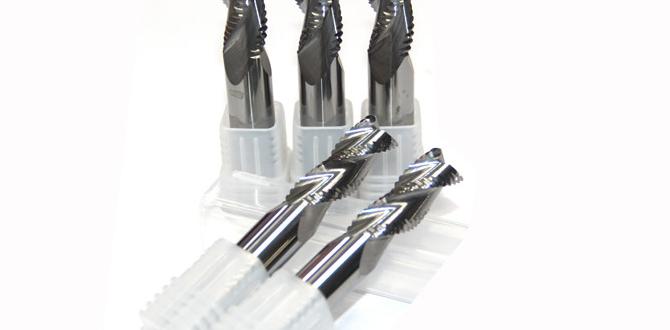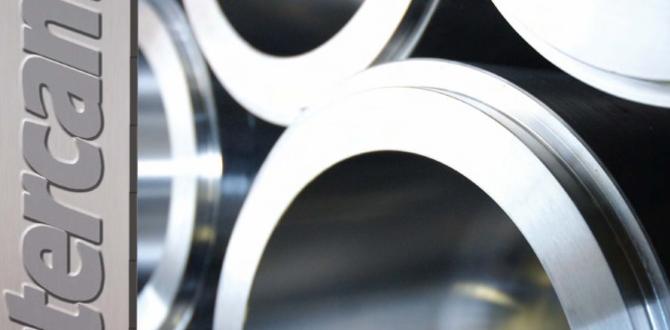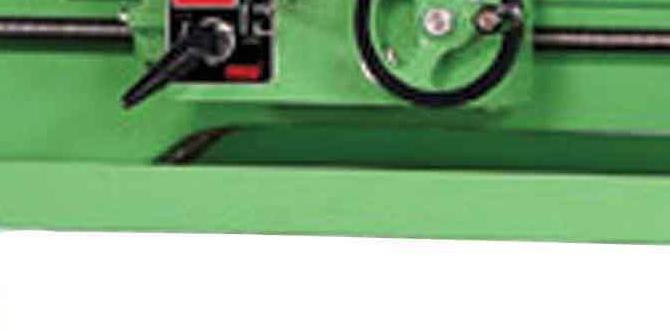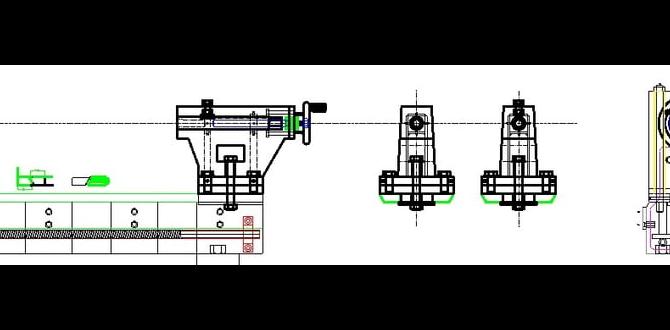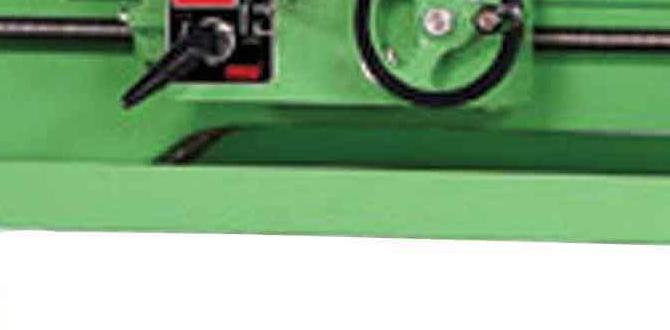Have you ever worked with a wood lathe? If so, you know the importance of a strong, steady belt. But what happens when that belt starts slipping? This can ruin your woodworking project. Don’t worry! There are simple wood lathe belt slipping solutions. These tips will help you fix the problem and get back to creating amazing pieces.
Key Takeaways
- Check belt tension regularly to avoid slipping.
- Clean pulleys for effective wood lathe belt slipping solutions.
- Replace worn-out belts for better performance.
- Use the right size belt for your wood lathe.
- Inspect alignment for smooth operation.
Understanding Belt Tension
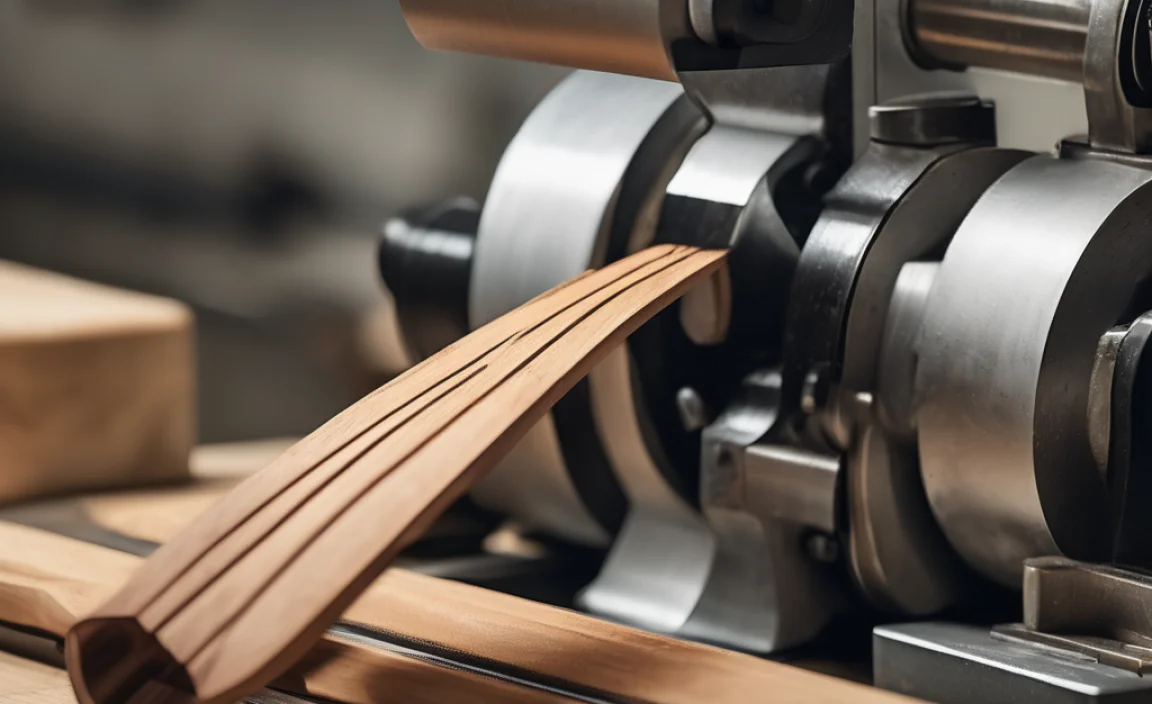
Proper belt tension is crucial for any wood lathe. When the belt is too loose, it slips easily. This can cause your lathe to stop working properly. To fix this, you need to adjust the tension. Most lathes have a tension adjustment knob. Turn it slowly until the belt feels firm but not too tight. You should be able to press the belt down slightly with your finger.
- Check for looseness before starting.
- Use a small wrench for adjustments.
- Ensure the belt is straight.
- Avoid over-tightening the belt.
- Tighten in small steps for safety.
- Test the lathe after adjusting.
- Repeat if necessary for the best results.
Once your belt has the right tension, it should stay in place while you work. This will make your projects go smoothly. If you notice the belt slipping again, you may need to tighten it more. Regular checks can help you keep the lathe in good condition.
Fun Fact: Did you know that the first lathes date back to ancient Egypt?
How to Check Belt Tension
Do you know how to check if your belt is too loose? It’s easy! First, turn off your lathe. Then, press down on the belt with your finger. It should move slightly, about half an inch. If it moves more, it’s too loose. You can also listen for a squeaking sound when the lathe runs. This might mean the belt is slipping. Checking regularly can save you time and effort later on.
Importance of Proper Belt Tension
Why is having the right belt tension so important? When your lathe’s belt is too loose, it can cause many problems. The lathe might not spin at the right speed. This can make your work uneven or damage the wood. Proper tension keeps everything working smoothly. It also helps your tools last longer. Imagine finishing a project without any hiccups. That’s what proper belt tension can do for you!
Troubleshooting Belt Tension Issues
What if adjusting the tension doesn’t help? Sometimes, the problem might be elsewhere. Check for dust or debris on the belt. This can make it slip. Also, make sure the pulleys are clean. Dust can accumulate and cause issues. If none of these help, the belt might be old or worn out. Consider replacing it with a new one. This simple step can make a big difference.
Cleaning the Pulleys
Clean pulleys are vital for preventing belt slipping. Dust and debris can build up over time. This causes the belt to slip off. To clean the pulleys, use a soft brush or cloth. Make sure the lathe is turned off before you start. Gently remove any dirt or dust. You can use a bit of soapy water for stubborn grime. Be sure to dry the pulleys afterward to prevent rust.
- Turn off the lathe before cleaning.
- Use a clean, soft brush.
- Remove visible dirt first.
- Apply soapy water for sticky grime.
- Dry pulleys completely after cleaning.
- Inspect for rust spots.
- Repeat monthly for best results.
Keeping the pulleys clean can make a big difference. It helps the belt grip better and last longer. Regular cleaning can also prevent other parts of the lathe from wearing out. It’s a simple task, but it goes a long way in maintaining your wood lathe.
Fun Fact: Did you know some wood lathes are over 100 years old and still in use?
Signs Your Pulleys Need Cleaning
How can you tell if your pulleys are dirty? Look for dust buildup on the metal. You might also notice a squealing sound when you turn on the lathe. This could mean the belt is slipping slightly. If your projects aren’t turning out right, dirty pulleys might be the cause. A quick clean can restore performance. Keep an eye out for these signs to maintain your machine well.
Tools Needed for Cleaning
What do you need to clean your pulleys? Not much! A soft brush, a cloth, and some soapy water can do wonders. A small vacuum can help remove loose dust. It’s important to have everything ready before you start. This makes the task quicker and easier. Always start by turning off your lathe. Safety is always first!
Tips for Safe Cleaning
How can you clean safely? Begin by unplugging your lathe. This prevents any accidents. Use gentle tools like soft brushes. Avoid harsh chemicals, as they can damage the parts. Follow up with a dry cloth to ensure everything is clean and rust-free. Regular maintenance can help your lathe last for years. Safety and cleanliness go hand in hand.
Replacing Worn-Out Belts
Sometimes, belts wear out and need replacing. Old belts can cause more slips and make your work harder. To replace a belt, first, find the right size. Check your lathe’s manual for specifications. Remove the old belt carefully and clean the area. Place the new belt in the same position. Adjust the tension as needed for a secure fit.
- Identify the correct belt size.
- Remove worn-out belt safely.
- Clean the pulley area first.
- Install the new belt properly.
- Adjust tension for snug fit.
- Test the lathe post-installation.
- Keep spares for future use.
Replacing the belt can improve your lathe’s performance. It can also make your projects turn out better. Don’t wait too long to change a worn-out belt. Regular checks will help you know when it’s time. Always keep a spare belt handy for quick changes.
Fun Fact: The largest wood lathe can turn objects over 35 feet long!
Why Belts Wear Out
Do you ever wonder why belts wear out? Over time, belts stretch and lose their grip. Dust and debris can also wear them down. Frequent use increases wear and tear. Even temperature changes can affect them. Knowing these reasons helps you plan regular checks. Regular maintenance keeps your lathe running smoothly.
Choosing the Right Replacement
How do you pick the right replacement belt? Start by checking your lathe’s manual. It will list the correct size and type. Buying the wrong belt can cause more issues. It’s also a good idea to keep extra belts on hand. They are not expensive and are easy to store. Having a spare makes replacement quick.
Steps to Replace a Belt
Want to replace a belt? It’s not hard! First, turn off your lathe. Carefully remove the old belt. Clean the pulleys to remove any dust. Place the new belt in position. Adjust the tension until it’s just right. Test the lathe to see if it runs smoothly. These steps will help your lathe work better.
Ensuring Correct Belt Size
Using the correct belt size is vital. A wrong size can cause slipping or damage. Check your lathe’s manual to find the right size. Always use a belt that fits snugly. If it’s too loose or too tight, it won’t work well. The best fit ensures smooth operation and a longer lifespan for your tools.
- Consult your lathe’s manual.
- Use a measuring tape for accuracy.
- Ensure the belt fits snugly.
- Avoid overly tight or loose belts.
- Test the fit before use.
- Replace belts as needed.
- Keep a spare belt handy.
Using the right belt size is crucial. It helps you work safely and efficiently. A belt that fits well is less likely to cause issues. Always double-check to ensure you have the right one. A small mistake here can cause big problems later.
Fun Fact: The first recorded use of a belt-driven lathe was in the 13th century!
Finding the Right Belt
How can you find the right belt? Start by measuring your old belt. Compare it to the recommendations in your manual. If unsure, take the old belt to a store for help. Salespeople can guide you to the right choice. It’s also smart to keep a note of your belt size for future replacements.
Testing Belt Fit
How do you test if the belt fits right? After installing a new belt, turn on your lathe. Watch to see if it runs smoothly. Listen for any unusual sounds. If the belt slips or squeaks, it might be too loose or tight. Adjust as needed until everything works perfectly. Testing helps you catch problems early.
Common Mistakes
What mistakes do people make with belts? Using the wrong size is common. Not checking tension regularly can cause issues. Some people forget to clean their pulleys, leading to slipping. Buying cheap, low-quality belts is another mistake. Avoid these errors by following proper maintenance tips. Your lathe will thank you!
Inspecting Alignment
Proper alignment is key for preventing belt slipping. Misaligned parts can cause the belt to slip off. Start by turning off your lathe. Check if all parts are in a straight line. If not, adjust them until they are. Use a level tool if you have one. Proper alignment ensures smoother operation and longer tool life.
- Turn off your lathe before inspecting.
- Use a level for accurate checks.
- Adjust misaligned parts gently.
- Check alignment regularly.
- Align all parts, not just the belt.
- Ensure bolts are tight.
- Test your lathe after each alignment.
Alignment helps your lathe work effectively. It prevents unnecessary wear and tear. Regular checks can save time and money in the long run. Make sure everything lines up well. An aligned lathe is a happy lathe!
Fun Fact: The word “lathe” comes from the Old English word “laðe,” meaning “to invite.”
Checking for Misalignment
How can you tell if your lathe is misaligned? Look for uneven cuts on your wood. This might mean parts aren’t lined up. Another sign is the belt slipping often. You can use a level to check for alignment. Regularly checking can prevent bigger problems down the road.
Correcting Misalignment
Need to correct misalignment? First, turn off your lathe. Use a level to check if parts are straight. Adjust them gently until they line up. Tighten any loose bolts. Turn on the lathe to see if it runs smoothly. These steps help maintain proper alignment.
Tools for Checking Alignment
What tools can help with alignment? A basic level is useful for checking straightness. You can also use a ruler for measuring gaps. Some people use specialized alignment tools. These tools make the job easier. Investing in good tools can save time and improve results.
| Problem | Solution | Tools Needed | Time Required |
|---|---|---|---|
| Belt Slipping | Adjust Tension | Wrench | 10 minutes |
| Dirty Pulleys | Clean Thoroughly | Brush, Cloth | 15 minutes |
| Worn-Out Belt | Replace Belt | New Belt | 20 minutes |
| Misalignment | Realign Parts | Level | 15 minutes |
Conclusion
Wood lathe belt slipping can be a pesky problem. But with these wood lathe belt slipping solutions, you can fix it. Check belt tension, clean pulleys, and inspect alignment. Replace worn-out belts and use the right size. Regular maintenance keeps your lathe running smoothly. Happy woodworking!
FAQs
Question: Why does my wood lathe belt keep slipping?
Answer: Your belt might be too loose, dirty, or worn out. Adjusting the tension often solves the problem. Cleaning the pulleys can also help. Regular checks and maintenance prevent slipping. Always use the correct belt size for your lathe.
Question: How can I fix a slipping belt on my wood lathe?
Answer: Start by adjusting the tension. Make sure the belt is neither too loose nor too tight. Clean the pulleys to remove dirt and dust. Replace old belts with new ones if necessary. Proper alignment also helps prevent slipping.
Question: What tools do I need to fix belt slipping?
Answer: You might need a wrench to adjust tension and a brush or cloth for cleaning. A level helps check alignment. Always have a spare belt on hand. These tools make fixing belt slipping easier. Regular maintenance keeps your lathe working well.
Question: How often should I check my wood lathe belt?
Answer: Check your belt regularly, at least once a month. Frequent checks help you spot issues early. This keeps your lathe in good condition. Regular maintenance saves time and prevents bigger problems. Your projects will turn out better, too!
Question: Is it hard to replace a lathe belt?
Answer: Replacing a belt is simple. First, turn off your lathe. Remove the worn belt and clean the area. Place the new belt and adjust the tension. Test your lathe to make sure it runs smoothly. With practice, it becomes easier.
Question: Can a dirty pulley cause belt slipping?
Answer: Yes, dirt and dust on pulleys can lead to slipping. Cleaning the pulleys regularly can prevent this. Use a soft brush or cloth to remove debris. Clean pulleys help the belt grip better. This simple step improves lathe performance.

